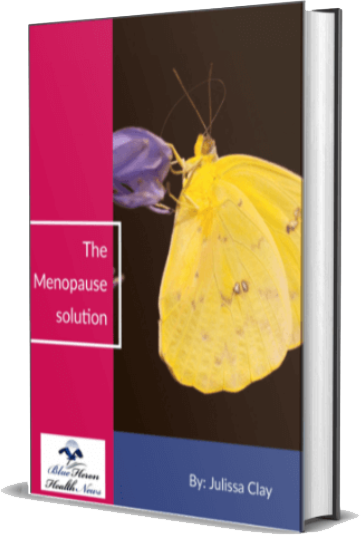
What are the primary causes of menopause in the USA?
Menopause, the natural cessation of menstruation and fertility in women, typically occurs between the ages of 45 and 55. In the USA, the primary causes of menopause include:
1. Natural Aging
- Ovarian Aging: The most common cause of menopause is the natural decline in ovarian function. As women age, their ovaries produce fewer hormones (estrogen and progesterone), leading to the end of ovulation and menstruation.
2. Surgical Menopause
- Hysterectomy with Oophorectomy: The removal of both ovaries (bilateral oophorectomy), often during a hysterectomy, causes immediate menopause due to the abrupt loss of ovarian hormone production.
- Partial Hysterectomy: Even if the uterus is removed and ovaries are retained, women may experience earlier menopause due to reduced blood flow to the ovaries.
3. Medical Treatments
- Chemotherapy or Radiation Therapy: Cancer treatments can damage the ovaries, leading to premature or sudden menopause, depending on the intensity and location of the treatment.
- Medications: Some drugs, such as those used to treat endometriosis or certain cancers (e.g., gonadotropin-releasing hormone agonists), can induce temporary menopause-like symptoms.
4. Premature Ovarian Insufficiency (POI)
- Genetic Factors: Conditions like Turner syndrome or genetic mutations (e.g., BRCA mutations) can lead to POI, resulting in menopause before age 40.
- Autoimmune Diseases: Autoimmune conditions, such as lupus or thyroid disorders, may attack ovarian tissue, causing early menopause.
- Infections: Rarely, viral infections (e.g., mumps) can damage ovarian function.
5. Lifestyle and Environmental Factors
- Smoking: Smoking has been linked to earlier onset of menopause because it accelerates the depletion of ovarian follicles.
- Obesity: While not a direct cause, obesity can influence hormonal balance and may contribute to menopausal symptoms.
- Malnutrition: Poor nutrition or extreme weight loss can disrupt hormone production and lead to early menopause.
6. Chronic Health Conditions
- Chronic Diseases: Conditions like diabetes, chronic kidney disease, or HIV/AIDS can contribute to earlier menopause due to their effects on overall health and hormone regulation.
7. Induced or Secondary Causes
- Environmental Toxins: Exposure to certain chemicals, such as pesticides or industrial toxins, may impact ovarian function.
- Stress: Chronic stress is not a direct cause but may influence the timing of menopause by affecting hormonal pathways.
Understanding these causes helps healthcare providers in the USA tailor preventive measures, treatments, and support for women experiencing menopause or its associated symptoms
Genetics plays a significant role in determining the age at which a woman experiences menopause. Studies suggest that up to 50-85% of the variation in the timing of menopause onset is influenced by genetic factors. Here’s how genetics impacts menopause onset:
1. Family History
- Women are likely to experience menopause around the same age as their mothers or close female relatives. If a mother or sister experienced early or late menopause, a woman may follow a similar pattern due to shared genetic predispositions.
2. Specific Gene Variants
- Genes Associated with Ovarian Function:
- Variants in genes involved in ovarian development, follicle formation, and hormone regulation (e.g., BRCA1, BRCA2, FSHR, and AMH) can influence the timing of menopause.
- For instance, mutations in the BRCA1 and BRCA2 genes, often associated with an increased risk of breast and ovarian cancer, may also contribute to earlier menopause.
- Genetic Determinants of Follicular Reserve:
- The BMP15 and NOBOX genes, which are involved in maintaining ovarian follicle health, can influence how quickly the ovarian reserve is depleted.
3. Premature Ovarian Insufficiency (POI)
- Genetic mutations or chromosomal abnormalities, such as:
- Turner Syndrome (missing or incomplete X chromosome)
- Fragile X Syndrome Pre-mutation (expansions in the FMR1 gene),
can lead to early menopause or POI, causing menopause before age 40.
4. Epigenetic Factors
- Environmental influences, such as smoking, malnutrition, or exposure to toxins, can modify gene expression (epigenetics), potentially affecting the timing of menopause. For example, women with a genetic predisposition may experience earlier menopause if exposed to harmful environmental factors.
5. Population and Ethnic Differences
- Genetic variation across populations influences the average age of menopause. For instance, studies show slight differences in menopause onset across ethnic groups, which may be attributed to genetic diversity.
6. Inherited Disorders
- Rare genetic disorders, such as galactosemia, can impair ovarian function, leading to earlier depletion of the ovarian reserve and earlier menopause.
7. Polygenic Influence
- Recent genome-wide association studies (GWAS) have identified multiple genes and genetic loci associated with menopause timing. These findings suggest that menopause onset is influenced by the combined effects of multiple genetic factors rather than a single gene.
Understanding the genetic factors influencing menopause can help predict its onset, identify women at risk of early menopause, and guide reproductive and healthcare planning.

The Menopause Solution™ By Julissa Clay – Blue Heron Health News The Menopause Solution it can be concluded easily that you should try this program at least once if menopause is destroying your internal organs or deteriorating your physical health to a considerable level. This program can help in resolving your health issues caused by perimenopause and menopause in a completely natural manner. You can use this program without any risk as you can get your money back if you are not satisfied with its results.